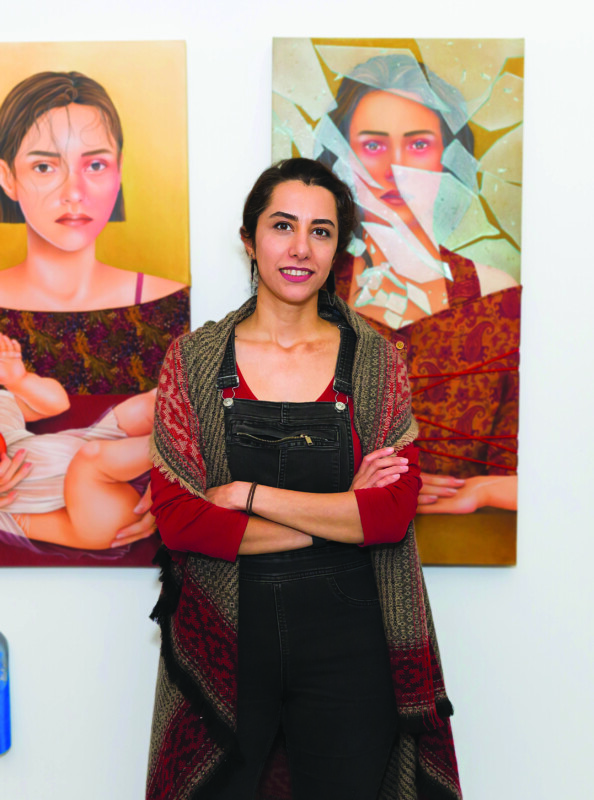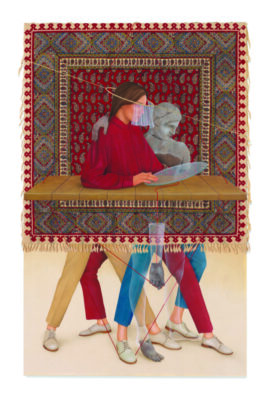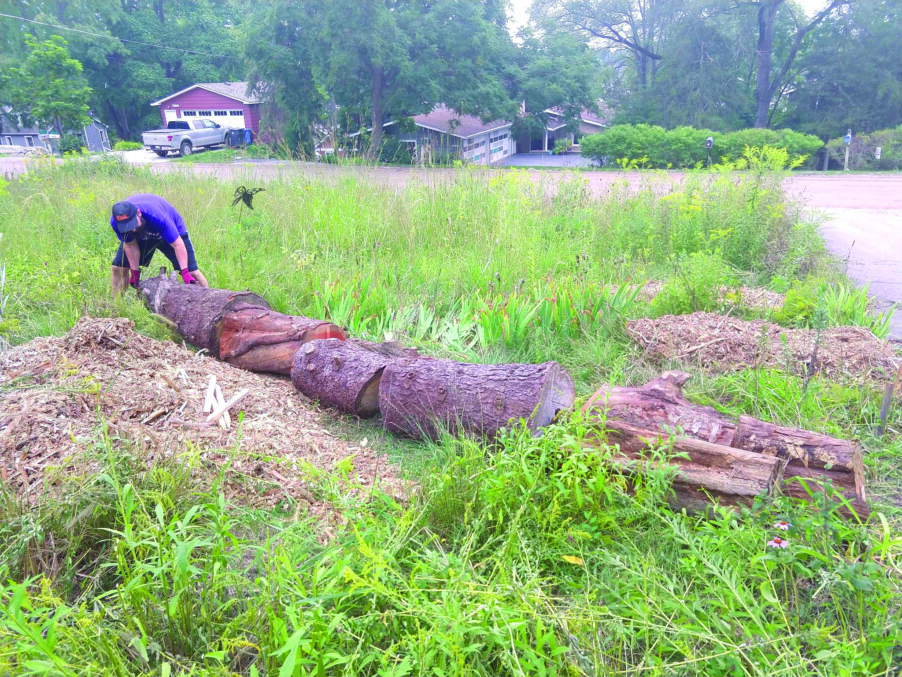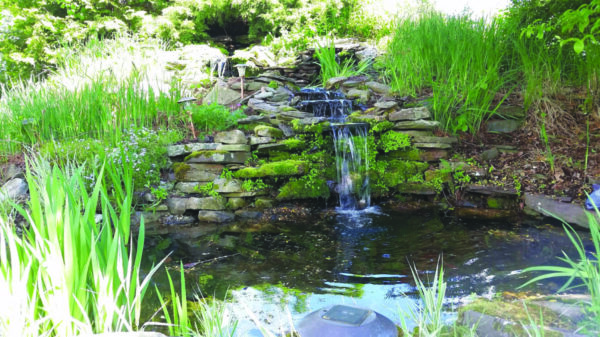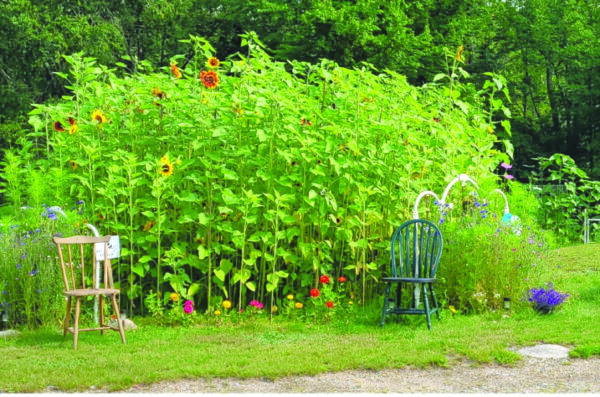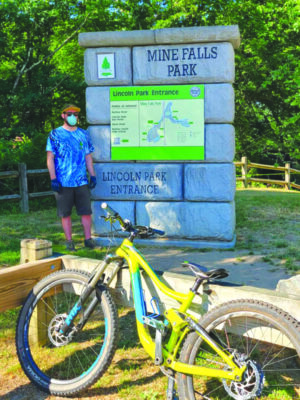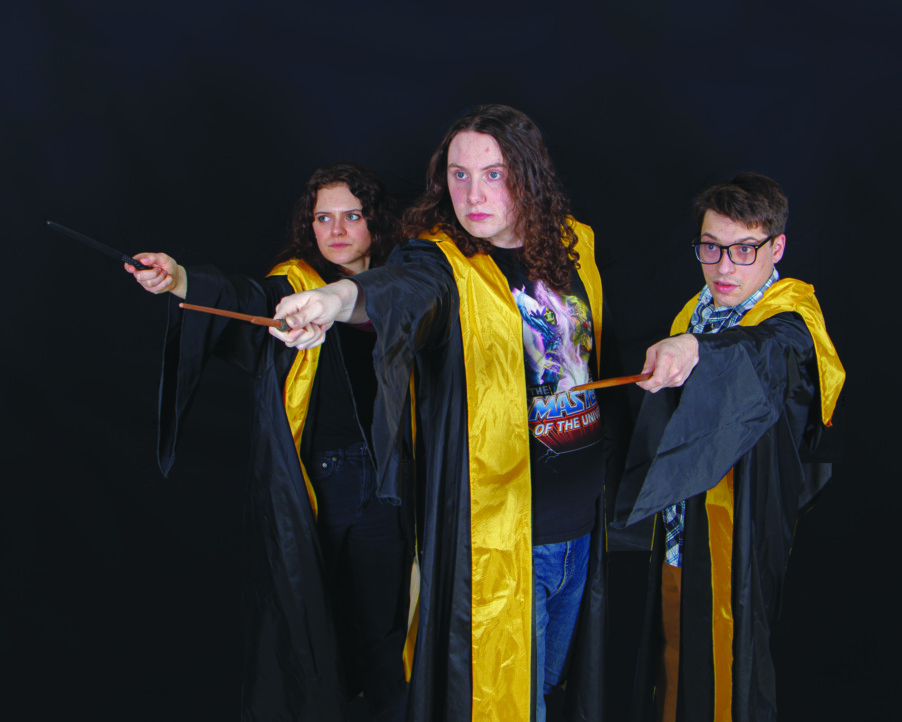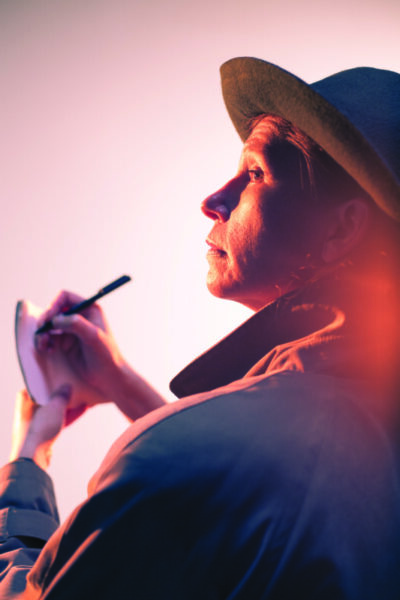Get two weekends of swords, ladies and lords, music and more at the NH Renaissance Faire
Knights, archers, jousters, pirates — you’ll find them all at the New Hampshire Renaissance Faire, back in person and happening over the course of two weekends, May 14 and 15 and May 21 and 22, from 10 a.m. to 5 p.m. each day.
“We’re very excited,” said Marc Bernier, general manager and president of the Board of Directors for the Renaissance Faire. “There have been a lot of changes because of Covid, and it’s been a lot of work. … Some of our acts and vendors have had to shut their doors either because of their health or [for financial reasons] … [but] we have a number of new acts.”
There are also new food vendors and new interactive activities for kids, including ax and knife throwing. And the whole fair has moved across the street to a bigger field.
“People will be parking in the same parking lot but just walk in the other direction,” Bernier said.
Traditional favorites will be back, including archery demos and practice shooting with the Junior Olympic archery division, as well as the Brotherhood of the Arrow and Sword and the jousting demos.
Bernier said about 30 percent of the people who attend dress in full Renaissance “garb,” which is what they call costumes, and about 20 percent come in partial garb.
“A lot of people will build their costumes as they go to fairs, so they might start with a tunic and then add a cloak [at the next fair] and then add footwear,” he said.
Each day of the fair has a theme, and visitors are encouraged to dress up based on the day’s theme: There’s Wizards and Fairies Day the first Saturday, and Heritage Day the first Sunday, then Pirates and Barbarians Day the second Saturday, and the last day is Literature, TV and Movies.
“Ren faires have probably gotten a little bit of an odd or bad rap — a bunch of nerdy kids running around in costumes,” Bernier said. “But thousands of people come in [and are able to] let their inner nerd out a little bit, because everyone is doing it.”
The Hippo reached out to some of this year’s entertainers, who shared via email their techniques for getting into character, their favorite part of the New Hampshire Renaissance Faire and more.
Marc Bernier as Master Marcus Bowyer, archer
Bernier is also the general manager and president of the Board of Directors for the New Hampshire Renaissance Faire.
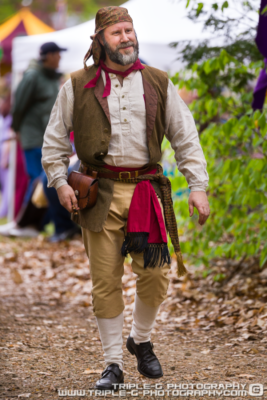
Tell me a little bit about your background.
I am the general manager of the Faire and I have been involved in ren faires for over 20 years in one capacity or another. I have worked in nearly every aspect of Faire except food service.
What’s your process for getting into character?
I play a variety of characters. The process depends on which, but most of them are primarily based on the garb (costume) the character wears.
What do you do to psych yourself up for performances?
I don’t generally have to. I slide right into the role.
What does your character/act bring to the ren faire?
This also relates to the character. I try to fit the theme for the day unless I have a specific role. I like being available for pictures with people and improvised interacting.
Aside from your own act, what’s your favorite part of the faire?
The charity donation we raise is my reason for putting in the work.
J.D. Lauriat as pirate Avery Meritt
Lauriat is the Village Cast Director and Combat Director for New Hampshire Renaissance Faire and one of the members of the musical act The Penniless Jacks.
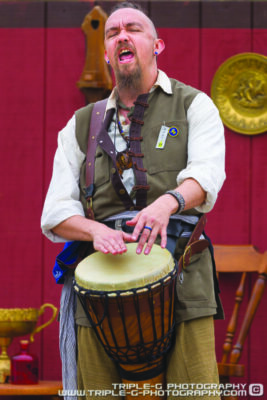
Tell me a little bit about your background.
Well, I have been working/performing at various renaissance faires since 2006. I started out as part of a village cast that focused on patron interaction and mixed in a bit of singing and sword fighting. Fast forward to today and I’ve been director at a few events, I’ve been part of several stage shows and performances, and [I have] traveled throughout New England doing everything from acting to fight performance to music shows to directing cast to teaching stage combat.
What’s your process for getting into character?
It ultimately depends on the character that I am playing, but I always tell my cast, especially those who are new to this, to use a piece of your costume as a sort of catalyst for getting into character. It could be your hat, or a doublet, or even something mundane like a pin or brooch that you wear. I’ve played several very different characters over the years, from Pirate to Grave Digger to Nobility. This year, I am simply the owner of a local tavern. For me, it’s often the hat. The main process for getting ready, for me, is to silently role-play or act out a scene that my character might be in. It’s often a variation of the same scene each time, but it’s something that really encompasses the mindset and characteristics of the person I’m going to be playing for the day.
What do you do to psych yourself up for performances?
As I mentioned, I will often play out a scene that the character could be in, but that doesn’t work for all situations. Some shows, when I’m just performing with The Penniless Jacks, don’t lend themselves well to being a character because we spend so much time on stage. So the start of the day is typically a bit of panic with a dash of fear. I’ve been doing this for over 15 years and a stage show still terrifies me, and I suspect it always will. I had a wonderful director years ago tell me that it’s a good sign to have a bit of fear before a show, because it means you care.
What does your character/act bring to the ren faire?
My character, Avery Meritt, brings a sense of protection to the rest of the village. Many of the locals are unaware of his past, but they know he isn’t to be trifled with. Still, he runs the local tavern and inn, and keeps the doors open as a sort of hospitality house for his neighbors. For the patrons attending the faire, he brings a warm welcome, a bit of conversation, and music to remember.
Aside from your own act, what’s your favorite part of the faire?
Honestly, aside from the fact that it’s a charity event, I would say the music. Throughout the years, I have seen so many amazing musicians and acts pass through, and many of them have become good friends. I love that it’s a rare moment that you don’t hear wonderful songs echoing throughout the grounds.
Ilkka Eskelinen as Lord Sheriff Alistair Fynne
Eskelinen performs with the Shimmynanigans, belly dancers at the Faire.
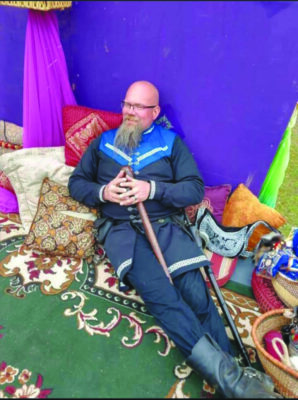
Tell me a little bit about your background.
My regular day-to-day work is as a job superintendent for a commercial construction company, as well as the safety officer and equipment trainer. I’m 52, born in Fitchburg, Mass. I have been a performer since 2010, originally as a villager. I sang shanties with a pirate crew for a few years. I also perform as a Viking, and recently had the honor to lead a service for a Viking-style funeral.
What’s your process for getting into character?
My process for getting into character: It all starts as soon as I wake on the day of faire. Getting my gear together for the day, sorting through and choosing what particular accouterments I’ll wear that day. While my costume stays fairly constant, I’ll adjust my outfit based on the temperature and weather outlook. My mindset, I go through a mental checklist of what’s lined up for the day, meet up with my fellow castmates and confirm everything is set. If doing stage combat, doing a few dry runs to make sure my partner and I have things in order.
What do you do to psych yourself up for performances?
I remind myself of some of my favorite memories from previous faires. One story in particular stands out, and I’ll try to keep it brief but I’d like to share it so you have the mental picture. Around 10 years ago, I spent some time chatting with a woman at faire, and was about to head off to a show. I asked for her hand, kissed it gently, and wished her a good day. She started crying! I asked what was amiss, and she told me (paraphrase) that no man ever pays her as much attention as I did that day. I still remember what I said to her (paraphrased of course): “Miss, you are very lucky! You have avoided being stuck with some idiot who doesn’t appreciate you! You are now free for an intelligent man to see you for who you really are, and be who you deserve.” I saw her again the following year at faire, and I didn’t recognize her at first. She had lost a lot of weight, changed her style, and introduced me to her boyfriend of several months. How wonderful is that?! The thought of making someone’s day even a little brighter, bringing a smile, a laugh, a shared moment — it brings me back year after year.
What does your character/act bring to the ren faire?
I am a wandering performer. I travel around the site, greeting people, engaging in conversations, perhaps joining a wandering singing group to sing a song. … This year we are introducing stage combat, and I will be doing a fight with one of the villagers. I love to make folk laugh. We never know what kind of day someone is having when they set foot onto the faire site. If I can bring a smile, a laugh, and give them a pleasant memory to take away from the day, it is all worth it.
Aside from your own act, what’s your favorite part of the faire?
Aside from my wanderings, my favorites are watching full-contact fighting in armor, such as The Brotherhood of the Arrow and Sword, or listening to the various singing groups and their stage performances, like The Penniless Jacks, The King’s Busketeers, and Myschyffe Managed.
Brian Caton as Sir Brian de Caton, Brotherhood of the Arrow and Sword
Caton formed the historical reenactment group at the Faire that demonstrates combat.
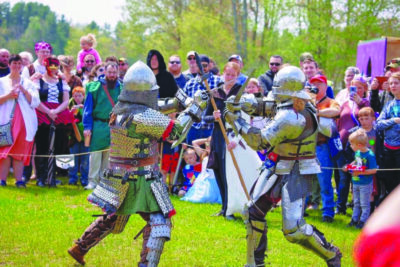
Tell me a little bit about your background.
Well, I started in the ren faire scene roughly about 26 years ago as a merchant but joined a reenactment group that performed at the New Hampshire Renaissance Faire in 2007. In 2015, several educators in the group and I formed the Brotherhood of the Arrow and Sword.
Our primary focus is educational reenactment of the medieval time period. Our goal is to show the difference between real history and Hollywood. We present at ren faires and schools throughout New England. At faire we will set up a hands-on medieval encampment where patrons can come in and see people performing period chores and also try on armor and weapons.
We also perform several types of presentations. One being our weapons presentation/life on the battlefield presentation. Another, and our most popular, is our fully armored, full steel fight show where we demonstrate fighting styles of the time period and modern-day tournament fighting in full-speed, full-contact combat.
What’s your process for getting into character?
My character, Sir Brian de Catton, portrays a knight from 1475 Yorkshire England. My armor and garb are all patterned off examples from the time period and are all handmade. At NHRF, I am also the Queen’s Champion.
What do you do to psych yourself up for performances?
I’d say that I start psyching up for the faire or getting into character by putting the garb on in the morning and our fighters, myself included, start psyching up for the fight show with the process of putting the armor on. Which can be a pretty involved process.
What does your character/act bring to the ren faire?
My favorite part of a faire is experiencing the crowds and especially the children when they see our fighters in armor and when they themselves get to try the armor. The making of memories is very important to us.
Aside from your own act, what’s your favorite part of the faire?
At NHRF, my favorite part is the Faire family that has come together to put on the charity event. From performers, merchants to volunteers and staff. There is a real sense of family at the event.
Danny Scialdone as Lord Aspergillius Gleekman
Scialdone is also the entertainment director of the Faire.
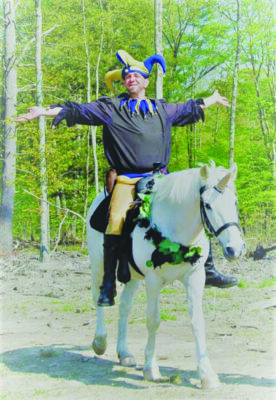
Tell me a little bit about your background.
I have been performing as a variety of characters at renaissance faires for 15 years now and found my way to NHRF in 2011 as their first official court jester, Aspergillius Gleekman, joining the rank of the royal court. In 2012, I took on the role of entertainment director for NHRF as well as Treasury Senior Officer for the Three Maples Renaissance Corp (a 501(c)3 charity organization). As for my character, Aspergillius is an energetic, spontaneous silly man that tends to do just the thing you don’t expect him to … he likes to keep people on their toes. A trusted advisor to Queen Catherine and a compassionate soul that ensures that there is a smile on everyone’s faces.
What’s your process for getting into character?
Put on my garb, simple as that. Aspergillius is really just my own everyday goofball personality, which makes it very easy for me to get into character … put on my costume (or “garb” as we call it), flip the switch, and off I go … 40 jingle bells and all!
What do you do to psych yourself up for performances?
Honestly, nothing really. Just like I said, flip the switch.
What does your character/act bring to the ren faire?
Happiness, smiles and laughter
Aside from your own act, what’s your favorite part of the faire?
That is a tough one, there are so many … if I had to pick one, I would say the interaction with patrons, especially the kids. Kids really soak up the whole renaissance faire experience like no other, you can actually see the magic in their eyes and smiles. The best ones, though, are those that are only at the faire because they got “dragged along” by friends or family. When they come through the gate they arrive with an obvious disinterest, but by the end of the day, they end up having the time of their life and can’t wait to come back!
Brian Weiland of the Misfits of Avalon
The Misfits of Avalon will perform the second weekend of the Faire.
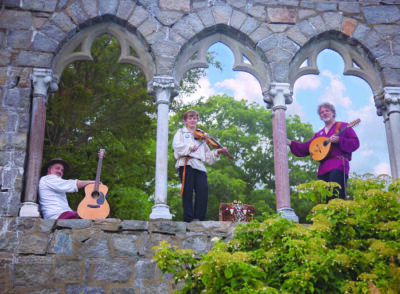
Tell me a little bit about your background.
My group is called the Misfits of Avalon, and we are a Celtic music act based in Massachusetts. Since our founding in 2009 we have at one time or another performed at pretty much every renaissance faire in New England, including performing at the New Hampshire Renaissance Faire every year since 2011. The core of the group is two lifelong best friends — myself on the hammered dulcimer and mandolin, and Max Cohen on guitar and vocals. All three of my children have also performed in the group over the years, and currently my youngest son, Aiden, is our fiddler. When I am not at faire I am a public school music teacher, and Max is a full-time professional musician.
What’s your process for getting into character?
Our characters are basically street musicians, which in renaissance terms means that we are definitely among the lower-class inhabitants of the realm! We therefore mostly wear simple peasant garb, though when we want to look a little fancier we sometimes wear full kilts. My mindset as a renaissance musician is actually not dissimilar to my mindset as a modern musician: I am there to hopefully gladden the hearts of all who hear me, from the humblest peasant to the queen herself!
What does your character/act bring to the ren faire?
Hopefully what the Misfits of Avalon brings to the faire is a little bit of beauty, a little bit of history, and maybe even a little bit of magic. I have for my entire life believed that music is a form of magic, and we do our best to cast good spells! We play several stage shows each day, but we actually spend the majority of our time — pretty much every moment when we are not on stage — busking around the fairgrounds, so that as visitors wander around throughout the day, the delicate ethereal tones of the hammered dulcimer playing beautiful Celtic melodies transports all within the realm back to a more mystical and beautiful time and place!
Aside from your own act, what’s your favorite part of the faire?
My favorite part of faire is the friendships and camaraderie. The people who work at ren faires are some of the most wonderful creative talented quirky people I know. We all have our own mundane lives and jobs and burdens, and we all live in this great big complex world, but we have all chosen to invest a pretty serious amount of time, effort, preparation and money in order to occasionally get together and create this little alternate world whose entire function is to share and inspire joy. I love being part of a community that does that!
New Hampshire Renaissance Faire
When: Saturdays and Sundays, May 14 and 15, and May 21 and 22, from 10 a.m. to 5 p.m. each day.
Where: 80 Martin Road, Fremont
Cost: Adults $18; kids over 4 $12 and kids 4 and under get in free. Tickets available at nhrenfaire.com or at the faire, and proceeds support the New Hampshire Food Bank and Rockingham Meals on Wheels.
Event is held rain or shine; check nhrenfaire.com in case of extreme weather.
Activities
Information according to the schedule at nhrenfaire.com.
Children’s Glen: Games, crafts and fun activities for the kiddies! Let them test their coordination on Jacob’s Ladder.
Archery Range: Archery at the Three Maples run by JOAD (Junior Olympic Archery Development). Free to play, but donations to JOAD are encouraged!
Craft Demonstrations: Many merchants will be demonstrating their craft at their booths, such as weaving, leather work and jewelry making.
Encampment Demonstrations: Visit the knights from the Brotherhood of the Arrow & Sword in the backfield and check out their camp, armor and weapons. Or visit our pirates and gypsies and see what trouble they’re up to!
Charity Wench & Lad Auction: Bid on goods donated from vendors and modeled by strapping lads and lovely wenches.
Bellydance Lesson: Learn to bellydance with the Shimmynanigans.
Entertainment
See performance schedule and map at nhrenfaire.com.
B.O.N.E.S. – New England Pirate Guild sings songs of the sea
Brother Sylvan – Poetry and readings from the traveled wandering bard
Duchess of Yorkshire Pudding – Whimsical tales, stories and songs of the heartwarming Duchess of Yorkshire Pudding
Gibbon The Troubadour – The minstrel plays a wide array of Irish-Celtic, nautical and folk songs
Guy Todd, Wandering Harpist – Enchanting music that will take you to another place and time
IJA – A group of jousters from all over brings the thrill of the “Game of Kings”
Medieval Music Jam – All of the faire’s talented musicians and musical performers come together for one big musical performance
Michael OJ Magician – Magic and illusions
Phoenix Swords – Medieval performance troupe demonstrates sword and weapon combat, fire breathing and flame handling
Primrose Pirates – Sword fighting and live black powder
Shimmynanigans – Bellydancing gypsies
Sir Timothy the Enchanter – The first-ever bullwhip act at the faire
The Brotherhood of the Arrow & Sword –Historical reenactment group demonstrates fully armored live steel combat
The Corr Thieves – Action and humor-filled show
The Dirge Queen – A musical queen
The Foxy Bard – PG13 – Roving bard playing folk-rock, Celtic rock and medieval songs
The Harlot Queens – PG13 – Acapella singing queens
The Harper and The Minstrel – May 14 & 15 only – Historically inspired performances of Medieval, Renaissance and Celtic Music
The King’s Busketeers – Band of musical bards with Irish pub songs, shanties and more
The Longshanks: Stilt Walkers & Storytellers – A storytelling duo wandering about the shire on stilts
The Misfits of Avalon – May 21 & 22 only – Duo of minstrels playing contemporary and traditional Celtic songs on the harp, guitar and hand dulcimer
The Penniless Jacks – Old-style pub music trio singing shanties and rousing rebel songs
The Pillage Idiots – Silly stories, songs and tales from a crew of comedic pirates
The Shank Painters – May 21 & 22 only – Sea-shanty singing trio
Two and a Halfwits – Improv comedy group
Queen’s Tea – Bring the wee ones for lemonade and cookies with the Queen herself
Featured photo: J.D. Lauriat, left, and Andy Prete, right, of the Penniless Jacks. Courtesy photo.


